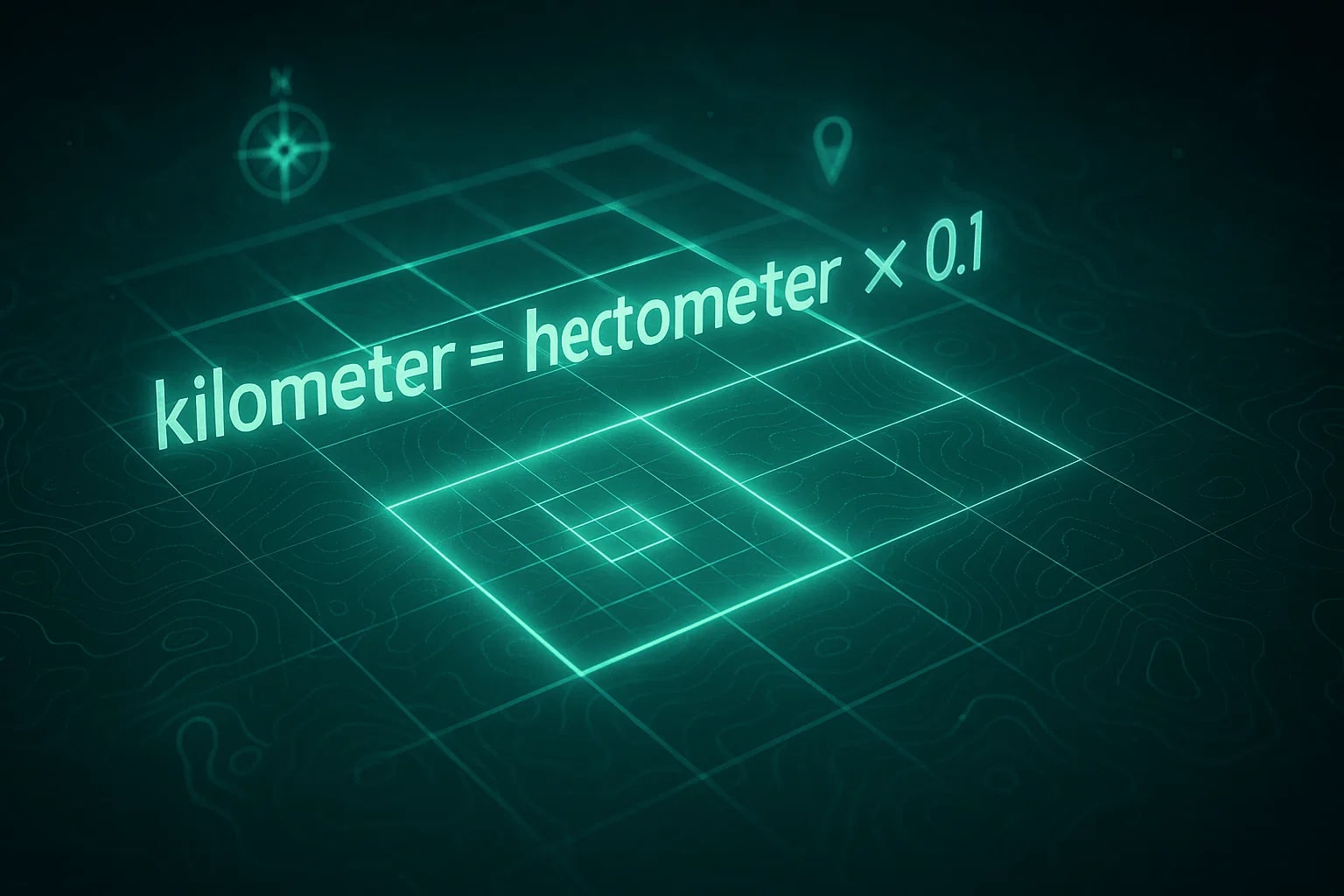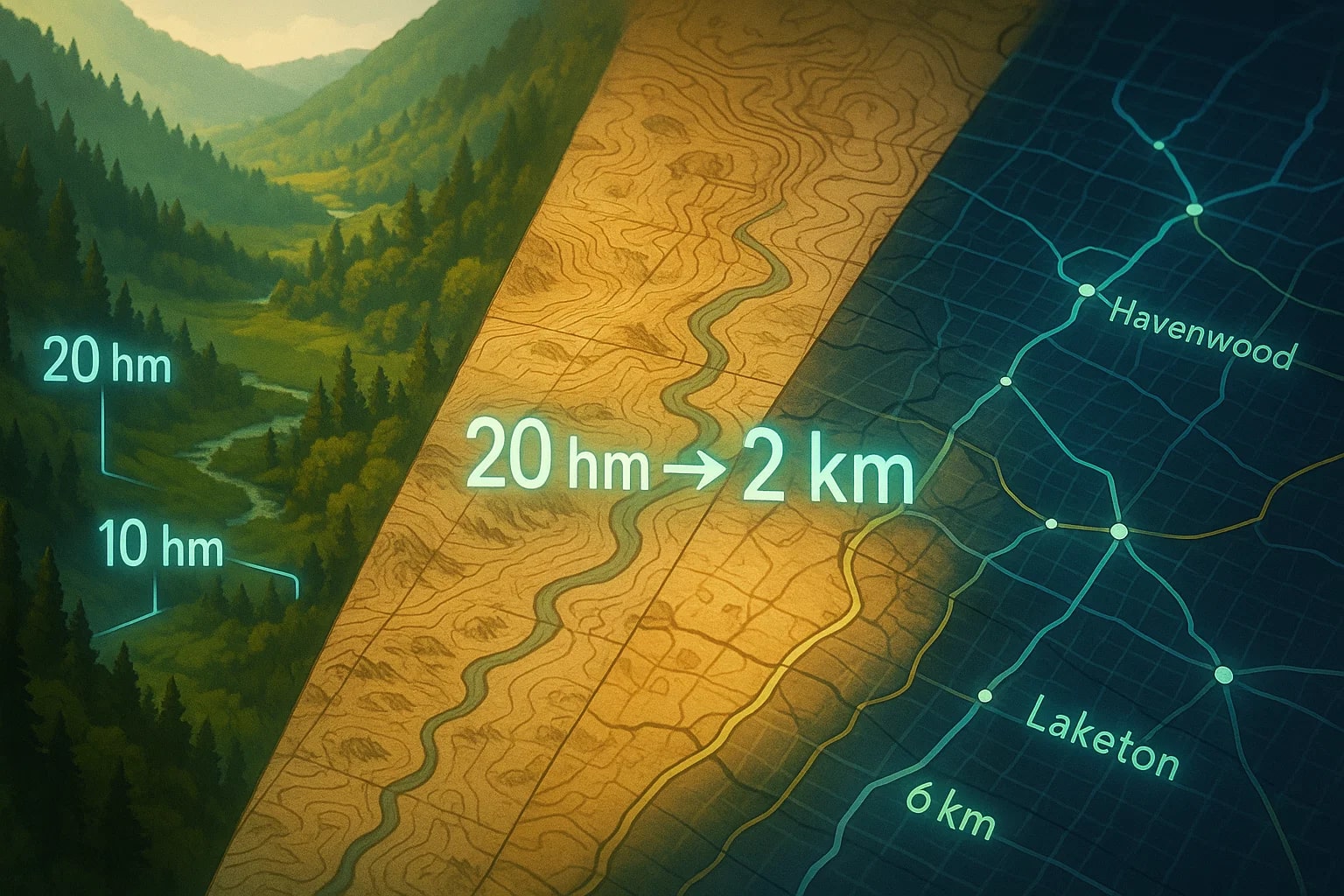hectometer to kilometer – How to convert hm to km
Converting from hectometer to kilometer is simple because both units belong to the metric system. The hectometer, while less commonly used, is useful in mapping and scientific descriptions, while the kilometer is the standard for large distances such as roads and geography. Learning how to convert hm to km ensures smooth scaling within the metric system.

What is a Hectometer (hm)?
A hectometer is equal to one hundred meters:
1 hm = 100 m.
It equals 0.1 kilometers and is sometimes used in topography, agriculture, and meteorology to describe mid-sized distances.
What is a Kilometer (km)?
A kilometer equals one thousand meters:
1 km = 1000 m.
It is the most common metric unit for large distances, widely used in road signs, maps, and athletics.
How to Convert hm to km
The formula is:
kilometer = hectometer × 0.1
For example, let’s convert 35 hm into kilometers:
kilometer = 35 × 0.1 = 3.5 km
So, 35 hm = 3.5 km.
For more conversions, you can use the Length Converter or check the full set of Conversion Tools.
Do you know?
-
The prefix hecto- means 100 in Greek, so a hectometer is exactly 100 meters.
-
Although rarely used in everyday life, the hectometer appears in specialized sciences like meteorology for describing visibility.
-
The kilometer was first adopted during the French Revolution alongside the meter to simplify road and land measurement.
-
In athletics, a 100-meter sprint is 0.1 km, essentially one-tenth of a kilometer—showing the close relationship between these two units.
Mapping and Measurement
Hectometers are often used in maps and topographic surveys, especially when describing mid-scale features like the width of valleys or forest clearings. For example, a 20 hm measurement translates to 2 km, giving researchers and planners a clear sense of scale.
Kilometers, on the other hand, dominate road systems and geographic studies. By converting between hectometers and kilometers, cartographers and scientists can move smoothly between detailed and broader measurements.

Smooth Scaling in the Metric System
The conversion from hectometer to kilometer demonstrates the elegance of the metric system. Each unit scales by powers of ten, making conversions quick and logical.
With one simple calculation, you can shift from mid-sized hectometers to larger kilometers—whether for geography, mapping, or scientific research.

